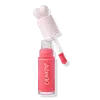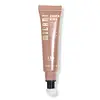What's inside
What's inside
 Key Ingredients
Key Ingredients

 Benefits
Benefits

 Concerns
Concerns

 Ingredients Side-by-side
Ingredients Side-by-side

Hydrogenated Polyisobutene
EmollientIsododecane
EmollientSqualane
EmollientDisteardimonium Hectorite
StabilisingSilica
AbrasiveEthylene/Propylene/Styrene Copolymer
Octyldodecanol
EmollientNiacinamide
SmoothingPropylene Carbonate
SolventSodium Polyglutamate
HumectantRicinus Communis Seed Oil
MaskingSodium Hyaluronate
HumectantHelianthus Annuus Seed Wax
Skin ConditioningDiethylhexyl Syringylidenemalonate
Skin ProtectingPhenoxyethanol
PreservativeCaprylic/Capric Triglyceride
MaskingButylene/Ethylene/Styrene Copolymer
Caprylyl Glycol
EmollientEthylhexylglycerin
Skin ConditioningHexylene Glycol
EmulsifyingPentaerythrityl Tetra-Di-T-Butyl Hydroxyhydrocinnamate
AntioxidantChondrus Crispus
MaskingAlumina
AbrasiveTriethoxycaprylylsilane
Iron Oxides
CI 15850
Cosmetic ColorantCI 77891
Cosmetic ColorantCI 19140
Cosmetic ColorantHydrogenated Polyisobutene, Isododecane, Squalane, Disteardimonium Hectorite, Silica, Ethylene/Propylene/Styrene Copolymer, Octyldodecanol, Niacinamide, Propylene Carbonate, Sodium Polyglutamate, Ricinus Communis Seed Oil, Sodium Hyaluronate, Helianthus Annuus Seed Wax, Diethylhexyl Syringylidenemalonate, Phenoxyethanol, Caprylic/Capric Triglyceride, Butylene/Ethylene/Styrene Copolymer, Caprylyl Glycol, Ethylhexylglycerin, Hexylene Glycol, Pentaerythrityl Tetra-Di-T-Butyl Hydroxyhydrocinnamate, Chondrus Crispus, Alumina, Triethoxycaprylylsilane, Iron Oxides, CI 15850, CI 77891, CI 19140
Water
Skin ConditioningDimethicone
EmollientIsohexadecane
EmollientC13-15 Alkane
SolventSynthetic Fluorphlogopite
Glycerin
HumectantEthylhexyl Palmitate
EmollientCetyl PEG/PPG-10/1 Dimethicone
EmulsifyingSilica
AbrasiveMica
Cosmetic ColorantQuaternium-90 Bentonite
Glyceryl Tribehenate/Isostearate/Eicosandioate
EmollientSodium Chloride
MaskingPhenoxyethanol
PreservativeHydrogenated Castor Oil
EmollientPolyhydroxystearic Acid
EmulsifyingLecithin
EmollientTriethyl Citrate
MaskingIsopropyl Myristate
EmollientIsostearic Acid
CleansingPolyglyceryl-3 Polyricinoleate
EmulsifyingTocopheryl Acetate
AntioxidantEthylhexylglycerin
Skin ConditioningPentaerythrityl Tetra-Di-T-Butyl Hydroxyhydrocinnamate
AntioxidantRosa Rubiginosa Seed Oil
EmollientPunica Granatum Seed Oil
EmollientCarthamus Tinctorius Seed Oil
MaskingCitrullus Lanatus Fruit Extract
Skin ConditioningTocopherol
AntioxidantAluminum Hydroxide
EmollientTin Oxide
AbrasiveCI 77891
Cosmetic ColorantIron Oxides
CI 15850
Cosmetic ColorantWater, Dimethicone, Isohexadecane, C13-15 Alkane, Synthetic Fluorphlogopite, Glycerin, Ethylhexyl Palmitate, Cetyl PEG/PPG-10/1 Dimethicone, Silica, Mica, Quaternium-90 Bentonite, Glyceryl Tribehenate/Isostearate/Eicosandioate, Sodium Chloride, Phenoxyethanol, Hydrogenated Castor Oil, Polyhydroxystearic Acid, Lecithin, Triethyl Citrate, Isopropyl Myristate, Isostearic Acid, Polyglyceryl-3 Polyricinoleate, Tocopheryl Acetate, Ethylhexylglycerin, Pentaerythrityl Tetra-Di-T-Butyl Hydroxyhydrocinnamate, Rosa Rubiginosa Seed Oil, Punica Granatum Seed Oil, Carthamus Tinctorius Seed Oil, Citrullus Lanatus Fruit Extract, Tocopherol, Aluminum Hydroxide, Tin Oxide, CI 77891, Iron Oxides, CI 15850
Ingredients Explained
These ingredients are found in both products.
Ingredients higher up in an ingredient list are typically present in a larger amount.
Ci 15850 is the pigment color red. It is an azo dye and created synthetically.
Azo dyes need to be thoroughly purified before use. This allows them to be more stable and longer-lasting.
This ingredient is common in foundations, lipsticks, and blushes. This color is described as brown/orangey red.
It has many secondary names such as Red 6 and Red 7. According to a manufacturer, Red 6 usually contains aluminum.
Learn more about CI 15850Ci 77891 is a white pigment from Titanium dioxide. It is naturally found in minerals such as rutile and ilmenite.
It's main function is to add a white color to cosmetics. It can also be mixed with other colors to create different shades.
Ci 77891 is commonly found in sunscreens due to its ability to block UV rays.
Learn more about CI 77891Ethylhexylglycerin (we can't pronounce this either) is commonly used as a preservative and skin softener. It is derived from glyceryl.
You might see Ethylhexylglycerin often paired with other preservatives such as phenoxyethanol. Ethylhexylglycerin has been found to increase the effectiveness of these other preservatives.
Pentaerythrityl Tetra-Di-T-Butyl Hydroxyhydrocinnamate (long name, huh?) is a synthetic antioxidant.
It is used to help stabilize other antioxidants or prevent the color from changing in a product.
As an antioxidant, it helps fight free-radical molecules. Free-radical molecules are capable of damaging our cells and other genetic material. Thus, antioxidants may reduce the signs of aging.
This ingredient is oil-soluble.
Learn more about Pentaerythrityl Tetra-Di-T-Butyl HydroxyhydrocinnamatePhenoxyethanol is a preservative that has germicide, antimicrobial, and aromatic properties. Studies show that phenoxyethanol can prevent microbial growth. By itself, it has a scent that is similar to that of a rose.
It's often used in formulations along with Caprylyl Glycol to preserve the shelf life of products.
Silica, also known as silicon dioxide, is a naturally occurring mineral. It is used as a fine, spherical, and porous powder in cosmetics.
Though it has exfoliant properties, the function of silica varies depending on the product.
The unique structure of silica enhances the spreadability and adds smoothness, making it a great texture enhancer.
It is also used as an active carrier, emulsifier, and mattifier due to its ability to absorb excess oil.
In some products, tiny microneedles called spicules are made from silica or hydrolyzed sponge. When you rub them in, they lightly polish away dead skin layers and enhance the penetration of active ingredients.
Learn more about SilicaThis ingredient is a combination of red, black, and yellow iron oxide pigments. This combination of colors is usually found in foundation, because it results in a "skin" color.